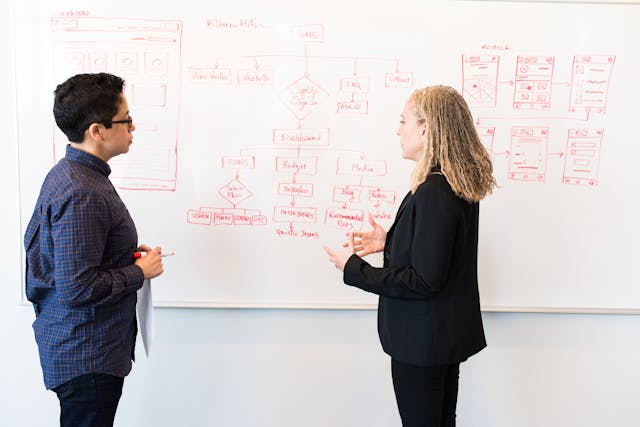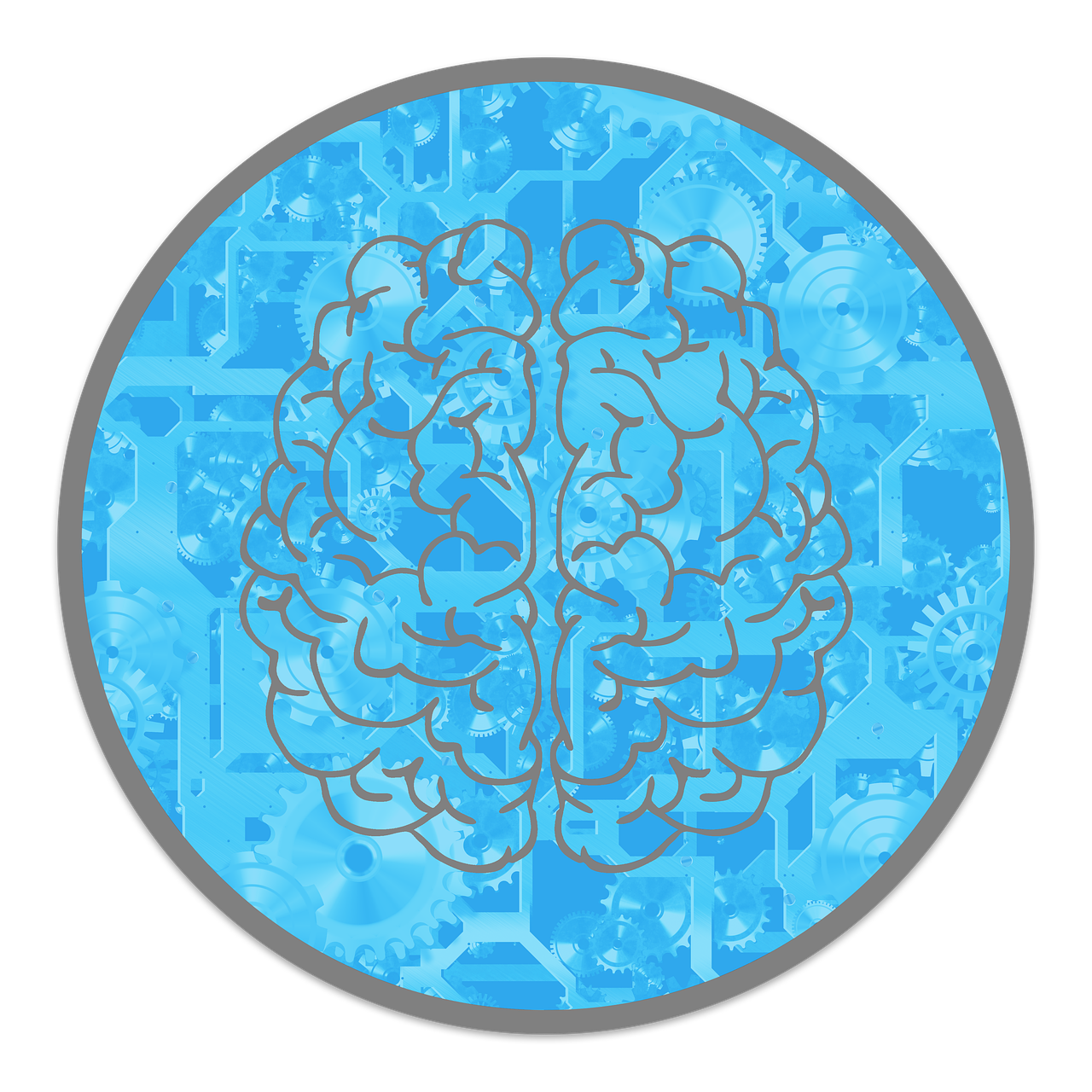
Decision-making and problem-solving are essential skills for personal and professional success.
However, our brains are wired to make mistakes, and biases can cloud our judgement.
Understanding the science behind decision-making and problem-solving can help us make better choices and achieve our goals.
In this article, we’ll explore the different parts of the brain involved in decision-making, the two main decision-making systems, common biases that affect our judgment, problem-solving techniques, and techniques to improve decisions and problem-solving.
How Do We Make Decisions?
Decision-making is a complex process that involves multiple parts of the brain.
Different Parts of the Brain Involved in Decision-Making
When it comes to decision-making, our brains are complex organs that rely on various regions to navigate choices effectively.
One crucial area is the prefrontal cortex, responsible for deliberate, analytical thinking.
This rational system is like the brain’s control center for decision-making, where options are evaluated, potential consequences are considered, and informed choices are made.
It’s where we weigh pros and cons, analyze data, and make logical decisions based on reasoning.
Conversely, we have the amygdala, a key player in the emotional system of decision-making.
This region governs our emotional responses and intuitive reactions.
Unlike the prefrontal cortex, which thrives on logical analysis, the amygdala is driven by feelings and gut instincts.
It’s the part of our brain that can react instinctively to situations, often prioritizing emotions over reason and sometimes overriding the rational system.
Common Biases that Cloud Our Judgement
In our quest to make sound decisions, we often encounter cognitive biases that can subtly influence our judgment.
Understanding these biases is crucial for making more objective decisions.
Let’s explore some of the most common ones:
Confirmation bias
This bias involves seeking out information that aligns with our existing beliefs while ignoring or dismissing evidence that contradicts them.
It’s like wearing blinders that prevent us from considering alternative viewpoints or exploring new perspectives.
Confirmation bias can hinder our ability to critically evaluate information and lead to narrow-minded decision-making.
Anchoring Bias
When faced with a decision, we tend to anchor our judgment on the first piece of information we receive, whether it’s relevant or not.
This initial reference point can heavily influence subsequent decisions, even if more information becomes available.
Anchoring bias can trap us into fixating on one option, preventing us from fully exploring other possibilities and making a well-rounded choice.
Availability bias
Our brains often gauge the likelihood of events or the importance of issues based on how easily they come to mind.
If something is readily accessible in our memory or recent in our experiences, we may overestimate its significance.
Availability bias can skew our perception of risks and probabilities, leading us to prioritize certain concerns over others based on their prominence in our minds.

Problem-Solving Techniques
Problem-solving is a critical component of decision-making.
Here are some key strategies for effective problem-solving:
Define the problem clearly
A crucial first step in problem-solving is to clearly define the problem you’re facing.
Take the time to articulate the issue in specific terms, avoiding ambiguity or vagueness.
By defining the problem with clarity, you create a solid foundation for addressing it effectively.
This clarity enables you to focus your efforts and resources on the core issue, preventing distractions and confusion.
Brainstorm potential solutions
Once the problem is clearly defined, it’s time to brainstorm potential solutions.
Engage in a free-flowing brainstorming session, allowing ideas to emerge without judgment or criticism.
Encourage creativity and lateral thinking, exploring both conventional and unconventional approaches.
Generating a diverse range of solutions expands your perspective and increases the likelihood of finding innovative solutions.
Remember, quantity is key at this stage—aim for quantity over quality initially.
Evaluate options and consider potential consequences
With a list of potential solutions in hand, it’s essential to evaluate each option thoroughly.
Consider the feasibility, effectiveness, and potential consequences of each solution.
Assess how each option aligns with your goals, values, and constraints.
Anticipate potential challenges or drawbacks associated with each solution and weigh them against the anticipated benefits.
This critical evaluation process helps you make informed decisions, steering you towards solutions that offer the best balance of advantages and drawbacks.
Choose the best solution
Armed with a comprehensive understanding of each option, it’s time to choose the best solution.
Reflect on your evaluation process and select the solution that best addresses the problem while aligning with your objectives and values.
Trust your judgment and intuition, but also remain open to feedback and input from others if necessary.
Remember that the best solution may not always be the most obvious one—consider unconventional or creative options that offer unique advantages.
Implement the solution and monitor Its effectiveness
Once you’ve chosen a solution, it’s time to put it into action.
Implement the chosen solution methodically, taking into account any necessary steps or adjustments.
Monitor its progress closely, observing how it unfolds and assessing its effectiveness in addressing the problem.
Be prepared to adapt and refine the solution as needed, responding to unexpected challenges or changes in circumstances.
Continuously evaluate the solution’s outcomes against your initial objectives, ensuring it remains aligned with your goals.

Techniques to Improve Decisions and Problem-Solving
In the dynamic landscape of decision-making and problem-solving, employing effective techniques can significantly improve outcomes and foster success.
Let’s delve into some strategies that empower individuals to navigate complexities with clarity and confidence:
Gather all available information
Thoroughly gathering all pertinent information is foundational to making informed decisions and solving problems effectively.
This entails conducting comprehensive research, consulting relevant sources, and collecting data that shed light on the issue at hand.
By ensuring you have a complete understanding of the context, factors, and variables involved, you equip yourself with the insights needed to make sound judgments and develop viable solutions.
Consider different perspectives
Embracing diverse perspectives is instrumental in mitigating biases and fostering comprehensive decision-making.
Actively seek out input from individuals with varied backgrounds, expertise, and viewpoints.
Encourage open dialogue and constructive debate to explore different angles and uncover insights that may have been overlooked.
By incorporating a range of perspectives, you enrich your decision-making process and cultivate a more nuanced understanding of the problem at hand.
Identify your biases
Acknowledging and addressing personal biases is essential for maintaining objectivity and making impartial decisions.
Take proactive steps to identify any biases that may influence your judgment, whether they stem from cognitive tendencies, past experiences, or cultural influences.
By cultivating self-awareness and recognizing your inherent biases, you can counteract their impact and approach decision-making with greater clarity and fairness.
Take your time to make decisions
Resisting the urge for hasty decisions is crucial for fostering thoughtful deliberation and avoiding impulsive choices.
Allow yourself the necessary time and space to thoroughly analyze the situation, weigh the available options, and consider potential ramifications.
Embrace a deliberative approach that prioritizes thoroughness over expediency, recognizing that well-considered decisions often yield superior outcomes in the long run.
Use mental models and frameworks for problem-solving
Harnessing mental models and frameworks provides a structured framework for problem-solving, guiding your thought process and enhancing decision-making efficacy.
Familiarize yourself with established models such as SWOT analysis, decision trees, or the scientific method, adapting them to suit the specific context of your problem.
These frameworks offer systematic approaches for organizing information, identifying patterns, and generating innovative solutions, empowering you to tackle challenges with clarity and precision.

Conclusion
Decision-making and problem-solving are critical skills for personal and professional success.
Understanding the science behind decision-making and problem-solving can help us make better choices and achieve our goals.
By being aware of biases, using effective problem-solving techniques, and employing techniques to improve decisions and problem-solving, we can make more informed and effective decisions.
FAQs
The two main decision-making systems are the rational system, which involves deliberate, analytical thinking, and the emotional system, which is driven by feelings and intuition.
Some common biases that affect our judgement include confirmation bias, anchoring bias, and availability bias.
You can improve your decision-making and problem-solving skills by gathering all available information, considering different perspectives, identifying your biases, taking your time to make decisions, and using mental models and frameworks for problem-solving.


